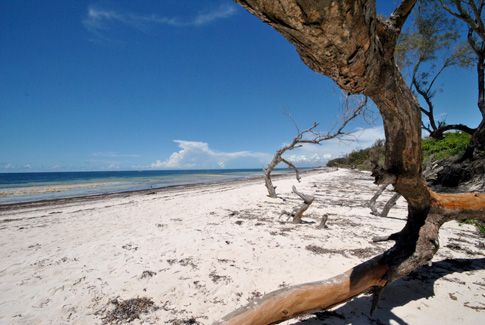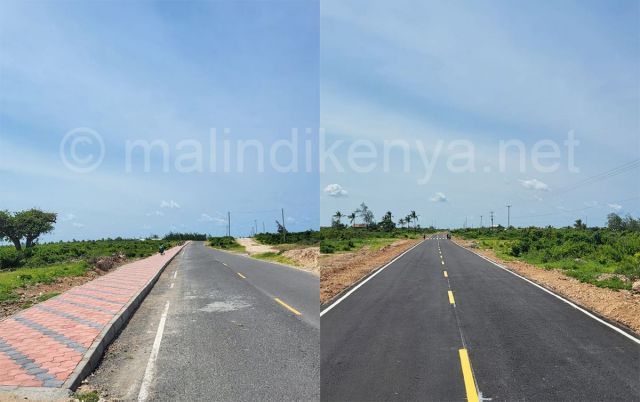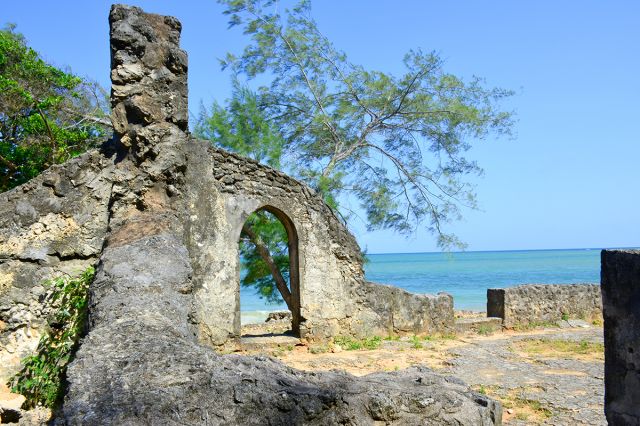
TERRITORY
26-01-2017 di redazione

Malindi is a small town overlooking the Indian Ocean shores, located about 120 km from Mombasa and just a few miles from the mouth of river Sabaki which takes the name Galana in its upper flow and is, actually, after river Tana, the second kenyan river by importance and basin, although remaining the longest one.
Its population counts around 40.000 inhabitants, with more than a tenth of westerners but the whole district, also including Watamu, Mambrui and many internal villages reaches more than 100.000 people. Other minorities are represented by indians or kenyan citizens having indian origin (the same can be said for the arabs).
Malindi economy is mainly based on tourism, since the introduction of italian hotels next to the existing british and german ones.
From the first half of the Eighties, also other activities were opened: bars, restaurants, casinos, discoteques, boutiques and companies transversally connected with tourism and with the foreign settlement along the coast such as import-export, joineries and handicrafts shops, small food industries and, above all, building activities.
Its old town centre develops around the bus station, through two roads forming a "Y" shape, in the "Barani" quarter. Ancient and typical is the arab citadel of Shela with its narrow lanes, mosques and small houses with courtyards.
Malindi well counts twelve mosques, but there are also some catholic and protestant churches.
In Kenya, integration between christians and muslims is quiet and peaceful, there is mutual respect, whereas, in some other places, that is not easy.
It is almost a good example for the believers all over the world.
From the harbour and along the shore up to the cape called Vasco Da Gama, the arab buildings mix with the ruins of the portuguese domination, among them the palace hosting Malindi historical museum, the portuguese cemetery and the monument dedicated to Vasco Da Gama Pillar, the explorer who reached Malindi in 1498, and that, actually, is the town symbol.
At the back of Vasco Da Gama cape, the beach called «silversand» spreads out. This area is full of hotels, tourist villages, restaurants and bathing establishments. At the extreme south of Malindi there is Casuarina, a residential area immersed in the green of palm and baobab trees and coloured by bougainvillea flowers and coral ground. Here, the beach of Malindi marine park, an area protected by the Kenya Wildlife Service (KWS), will offer sea with wonderful blue tones and reef for diving and going to unforgettable sea safaris. From this point, tourists can take a boat to reach the most striking ocean floors and the enchanting beaches in Mayungu.
Malindi northern part, on the road to Lamu, is the commercial area, recently built. In fact, along "Lamu Road" you can find banks, shopping centers, supermarkets and shops, the two discoteques where most of the tourists go, the three bars serving espresso, trattorias, pizza-restaurants and the casino with its own restaurant. Going toward Mambrui, there are other residences and tourist villages in front of the huge and wild beach where ocean is not protected by the reef. Different colours, different landscapes, different depths of the sky. Here you can take a horse and ride up to the river to see flamingos and hippos, drive a "quad" on the dunes or playing golf in front of the sea. Kibokoni area, with its cosy cottages and small villas bounds Malindi territory at north, while the road, crossing Sabaki river with a bridge, goes on toward the border with Somalia, which is about 300 km far.
History
Formerly it was Melinde. That was the name of the harbour where, at the beginning of year 1000, the arab ships going to Oman and Zanzibar sultanate started developing the maritime traffics. Around Melinde harbour a flourishing market of fruit and spices grew, although fish variety should not be forgotten as it offered food to anyone stopping there during trips and explorations.
In the 13th century Malindi was already a small town, with people flocking there also by land. At the beginning of 1500 Malindi already competed with Mombasa for the traffic of spices and agricultural produce (in particular, products extracted from the sugarcane). Yet, as near Malindi it was possible to hunt elephants and then deal with the extremely precious ivory, many arabs moved there and built their homes, turning the natives into slaves. The arab citadel developed in the today's typical Shela quarter, very near the harbour. It was surrounded by rudimentary walls and, for this reason, it was not difficult to penetrate it. Although repeatedly invaded by somali tribes coming by land, especially the fearful Galla, the town grew up and increased its commerce.
In 1498 the portuguese explorer Vasco Da Gama reached Malindi. He was the first navigator going so far, during his expedition toward the East. Vasco Da Gama stopped there for some time and received a kind welcome by the lords in Malindi but a plague epidemic decimated his crew. So, the sultan of Oman helped him, providing a part of the men necessary to go on with the trip. In the portuguese explorer's honour, the Vasco Da Gama Pillar was built, a signalling tower for the navigators which then became the symbol of Malindi. If Da Gama was, above all, an explorer moved by the wish to discover new lands, change the known maps thus getting a role in the history, the portuguese who arrived later, for whom, against his will, he acted as a «forerunner», well, they were not interested in establishing good relations with the local people and neither with the sheikhs and the sultans of arab origin. At first, they arrived in Mombasa and sacked it, then, they reached Malindi, stole everything and started a bloody slave trade.
Even after Mombasa went back again under the arabs, Malindi remained a portuguese fortress and a century of civil wars undermined it, impoverishing it and made it a sort of desolate harbour, a place to stop just to buy and sell slaves or the few remained goods.
At the beginning of 1800, in view of the big explorations by germans and english, Malindi returns under the arabs who conquer Fort Jesus, the portuguese fortress in Mombasa and, thanks to Zanzibar and Lamu
sultans' help, they retake the kenyan coast. Under the sultan Majir, Malindi lives a new happy era, a new harbour was built and agricultural and commercial activities started again.
At the end of the 19th century the english moved from Mombasa to Malindi after that the germans, first gone to Witu, had turned to Tanzania. The british colonizers were used to go to Malindi as a “buen retiro” for deep sea fishing and big game hunting in the Tana river. Thanks to them, the presence of indians increased in Malindi as well, over the years. Indians were mainly active in the commerce and particularly developed the textile market.
At the beginning of the Thirties, general Lawford opened the hotel which still today bears his name and which hosted businessmen from Mombasa as well as adventurers having their headquarter in Nairobi, the actual Eastern African capital.
After the end of the second world war, thanks to the intercontinental flight introduction, Malindi becomes the favourite holiday place for english, americans and germans so that other two hotels are built, the Sindbad and the Eden Roc. Besides Ernest Hemingway, who had already celebrated Kenya in his novel "Green hills of Africa", anglo-american politicians and economists reach Malindi and, at the same time, other european people start arriving too.
In 1963, Kenya independence reduced the role of the British Empire in the Country and many ex-colonizers, once reached the age to retire, moved to Malindi and Watamu forever, built villas on the sea and Malindi expanded, in particular in the south, the today's Casuarina area.
During the Sixties, more than 5.000 europeans live in Malindi, one third of the local population. The first italians arrive by the mid-Sixties: firstly technicians, engineers and skilled workers of the “Luigi Broglio” italian aerospace base (better known as “San Marco” base) stationed in Ngomeni, thirty km north of Malindi, then hunters, adventurers, enthusiasts for Africa and the first theorists of the «escape from civilization».
At the end of the Eighties the first tourist villages, italian restaurants and hotels are built. During the Nineties the first tourism «boom» in Malindi takes place: three thousand residents the whole year and thousands of persons on holiday in the high season. The building activities go very well and many europeans choose Malindi as their second home, also benefiting by the low prices and the quality of life in Kenya.
Some years of decline follow, due to the war in Somalia, the Ebola virus, the misinformation by the media and the italian press and Al-Qaeda terrorist outrages in Nairobi and Mombasa. Especially the "all inclusive holiday" tourists are those who abandon Malindi, while the home owners and those who work there clench their teeth, waiting for better times.
Times that, punctually, arrive, also favoured by the government stability and the economic recovery of the western world.
Malindi is again the paradise for a holiday, lapped by the Indian Ocean and with the savanna and the animals kingdom only a short way away.
The sales of villas and flats go on very well, the “vip” are excellent testimonials for the kenyan coast and the activities increase. In the same way, the standard of living of the local people improves.
This condition lasts until the tragic elections in december 2007 involving the north of the Country but indirectly affecting the coast too, thanks to an alarming media campaign and the stand of the european foreign affairs ministries. Some months later, with a thousand victims and several refugees, in northern Kenya, almost a thousand km far from the coast, the political resolution is achieved.
Life in Malindi was wonderful, even during that period of tensions, due to the cordiality and kindness of the local people, the marvellous landscape, the mild climate and the presence of all the elements of the Nature, included the fruits of the earth and the sea delighting anyone staying there.
Climate
The equatorial zone to which Malindi and the kenyan coast belong, is characterized by the monsoon wind passage. So, the solar year is not split in the traditional four seasons (although, unfortunately, this can be said for Europe as well). In an area where, for nine months in a year, temperature never falls below 20° C, there is no winter but a rain season with eastern winds bringing continuous disturbances and temperature can even drop to 18° C and is hardly higher than 26° C. It usually starts raining by mid-april with sporadic downpours that reach their top between mid-may and the beginning of july. As from july, a sort of african spring starts: nature is happily sprinkled with so much water and a bright green is everywhere, the cool and dry wind «kusi» strongly blows and weather more and more improves. Around early october, «kusi» is replaced by «kaskazi», a warm wind bringing a slight humidity (nothing, if compared with the humidity typical of the italian summers) and the so-called «little rains» in november. They last maximum a couple of weeks and, from that moment on, the african summer starts: dry, warm and cosy. The highest temperatures are reached in february and march (minimum 28° C and maximum 37° C), then the nature cycle repeats as the year before.
However, it should be noted that the presence of the sea mitigates the torrid climate as well as the cool in june and july. For this reason, climate of the kenyan coast, over the year, is considered among the best in the world.
The Museum
Malindi museum, an ancient portuguese building with columns, is located in Vasco Da Gama Road. Here, it is possible to run through the town history by means of books, nautical and geographical charts, documents, pictures, drawings of monuments and houses and other information and testimonies, in particular dating back to the portuguese domination.
Opening time to the public: from Monday to Friday, from 8.00 to 17.00. Saturday from 8.00 to 12.00. Sunday closed.
Entry ticket fares:
tourists: 500 kenyan schillings (children up to 10 years old 250 Kshs.)
Eastern African residents: 400 Kshs. (children 200 Kshs.)
Kenyan citizens: 100 Kshs. (children 50 Kshs.)
HISTORY
di redazione

Many who know Kenya's history are convinced that Christianity was brought here by German missionaries who opened the first Catholic mission in...
HISTORY
di redazione

The story of the first Chinese to land on the shores of the Indian Ocean is six hundred years old.
According to Beijing scholars who recently published a book on the voyages of the great oriental navigators, it was in...
AFRICAN POEM
di Freddie del Curatolo

Watamu the beautiful.
Malindi the magic.
Watamu the young and sparkling.
Ancient Malindi but still interesting.
PLACES
di redazione

Bad news does not always bring as much bad news, sometimes it rains in the dry and not in the wet...
PLACES
di redazione

The Portuguese presence in Malindi began with the arrival of Vasco de Gama in 1498. It is known that the chapel was built at the end of the 15th century. It is rather surprising that the authorities of an ancient...
PROMOTION
di redazione

As part of the presentation of the "Kenya Beach Destination Strategy," the report on the revitalization of tourism commissioned by the Kenyan government agency Spanish THR, yesterday in Malindi there was also talk of Watamu destination.
"A tourist destination that...
NEWS
di redazione

The low season in Kenya sometimes holds some nice surprises, especially when new administrations (such as the one in national government and the one sitting in Kilifi's county offices) decide to...
PLACES
di redazione

It was called "Jumba La Mtwana", where "jumba" in kiswahili means "home".
It was an Arabic citadel built in the 13th century AD on the banks of the Indian Ocean, not far from the cove of today's Mtwapa, about twenty...

I didn't want to go back to Kenya.
Not that I didn't like it, I liked it more!
I had enjoyed myself in profusion.
FILM
di redazione

The incredible story of Robin Cavendish told in this film released in 2017, whose original title is "Breathe".
It is a Hollywood production starring the young Andrew Garfield (Spider Man, The social network) who plays the protagonist of a true...